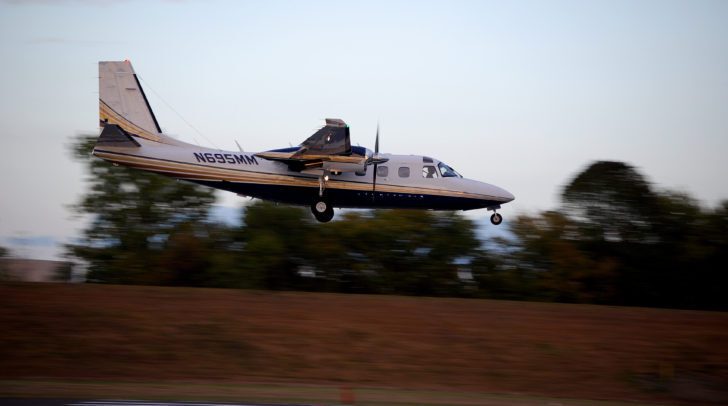By Robert Erlick

It is important to have a properly adjusted fuel flow at flight idle on TPE331-powered aircraft. More specifically, instances have been identified in which the flight idle fuel flow was adjusted too low in an attempt to increase descent rates. This practice can adversely affect the flight characteristics at low aircraft speeds.
An aircraft descent rate is affected by its gross weight and thrust. The minimum amount of thrust required to maintain an optimum aircraft sink-rate is normally established during aircraft certification test flights. Moreover, for propeller-driven aircraft, the amount of thrust is a function of propeller blade angle and fuel flow (turbine temperature) to the engine. Hence, for a given aircraft gross weight, and provided all engine controls are rigged correctly, minimum inflight propeller thrust and thus specific sink rates are dependent upon fuel flow.
Between flight idle (FI) and maximum power, known as the prop-governing mode, the power lever (PL) controls fuel flow (Wf). Moreover, the lowest in-flight fuel flow can be attained by reducing the PL to the FI gate. It is imperative to remember to never reduce the PL behind the FI gate while airborne. This PL position yields what is called Flight Idle Fuel Flow (FI Wf). A higher-than-recommended FI Wf will result in a lower sink-rate and causes “floating” during the landing flare. Conversely, lower-than-the-recommended FI Wf settings may unfavorably affect aircraft controllability due to excessively high sink rates and Negative Torque Sensing system operation (NTS’ing) during the flare. Remember that NTS’ing occurs when the wind slipstream drives the propeller.
Pilots should occasionally check the FI Wf settings of their aircraft. This can be easily accomplished by verifying the correct rate of descent and confirming the absence of any yawing tendencies during a FI descent. However, each aircraft has its specific FI Wf and rate of descent. Therefore, the respective aircraft maintenance manual should be consulted to ascertain the correct FI rate of descent at a specific gross weight, airspeed, and altitude.
If the FI sink rate differs from the specified value, if the aircraft is yawing, or if there are any indications of NTS’ing during the FI descent, the FI Wf must be corrected in accordance with the applicable maintenance manual procedures.
For additional information on this or any other TPE331 engine operational issues, please contact Rob Erlick at the Honeywell Flight Technical Services Group at (480) 399-4007, or [email protected].
